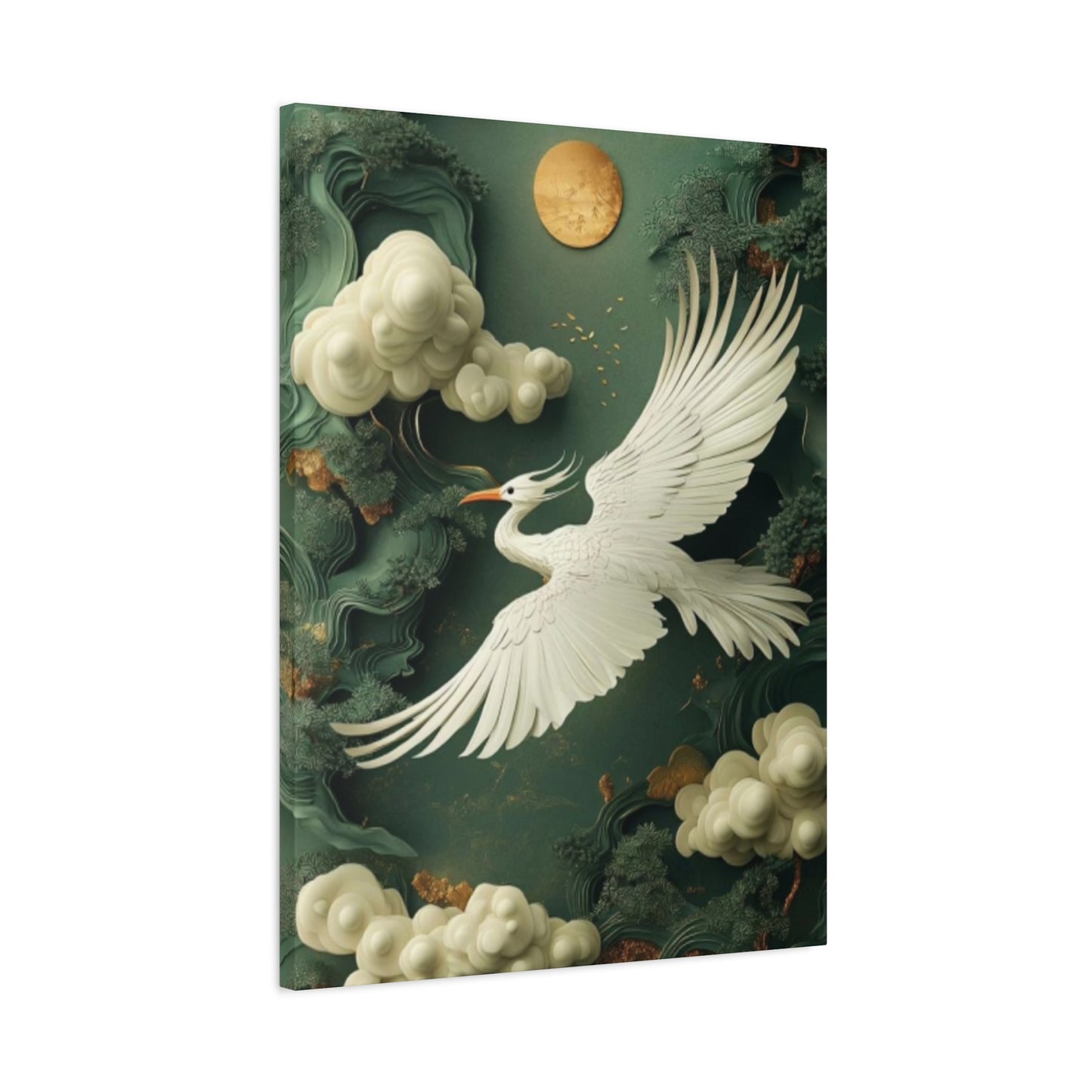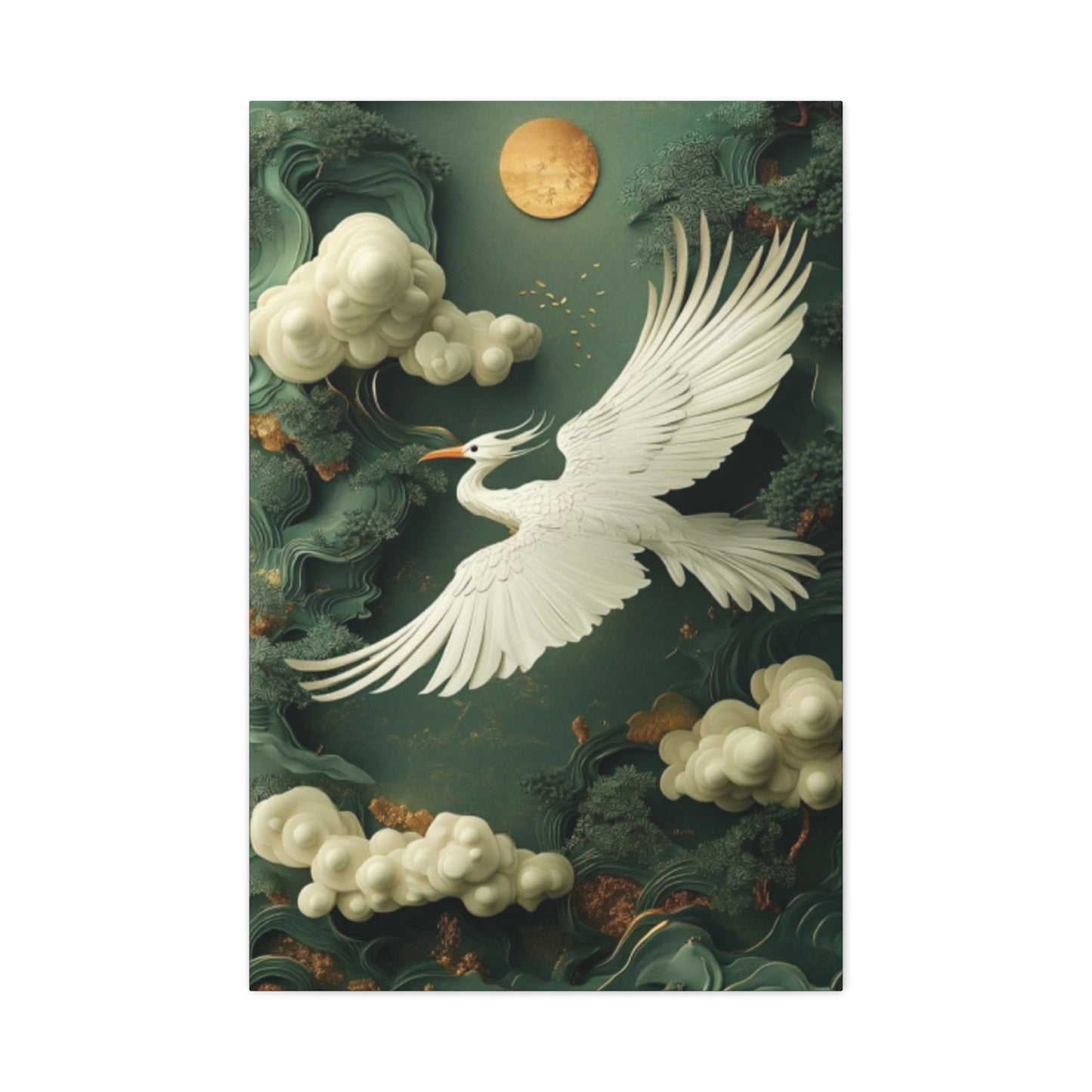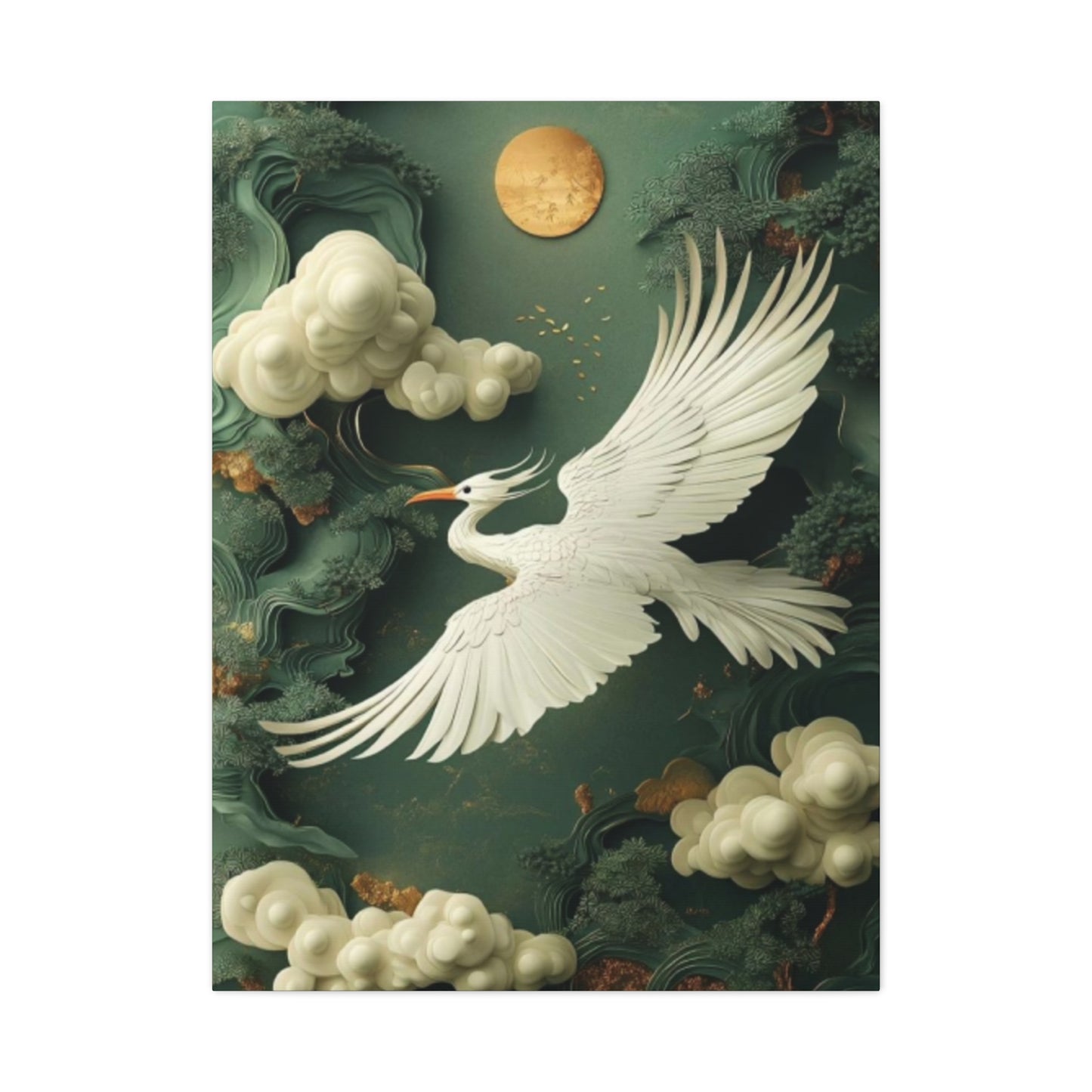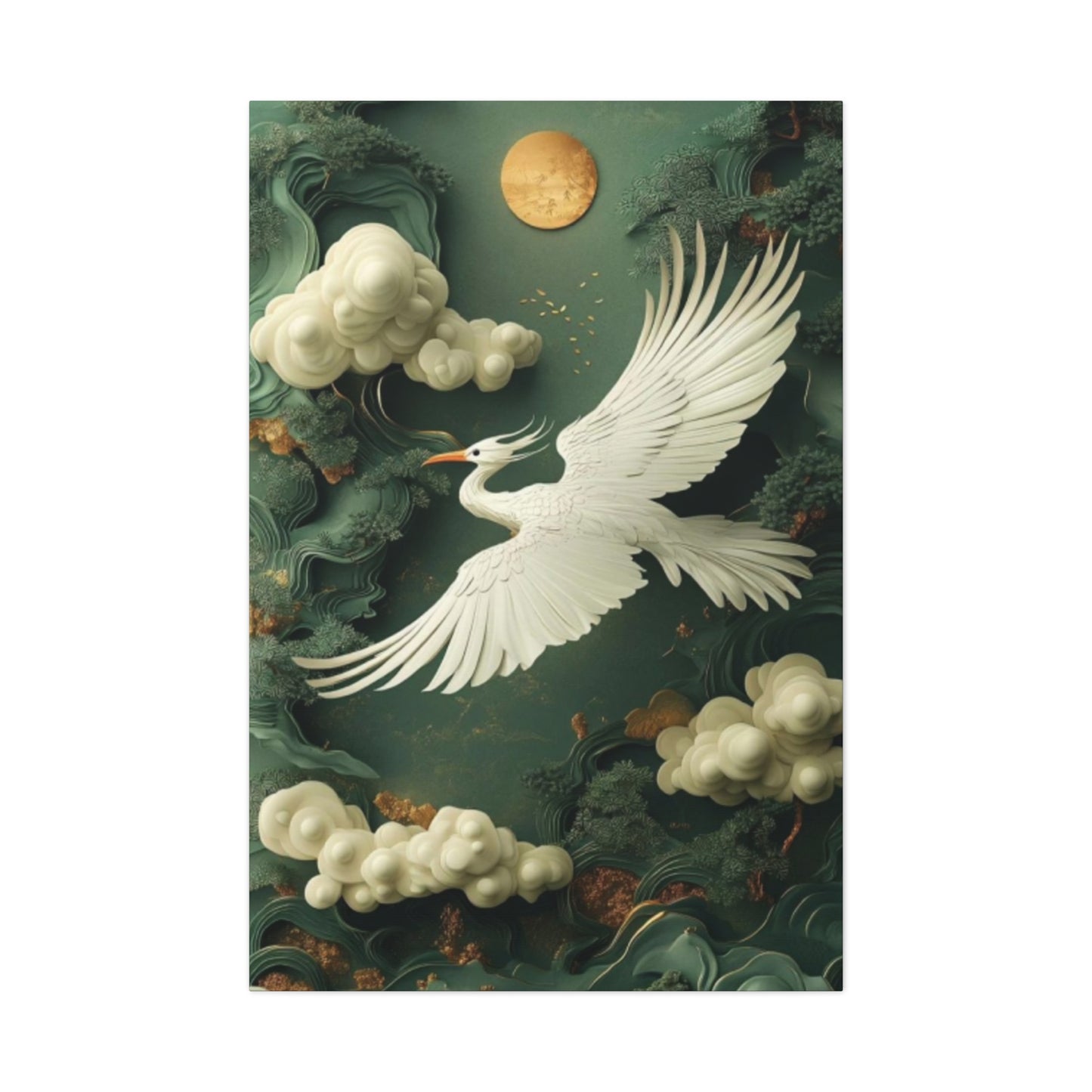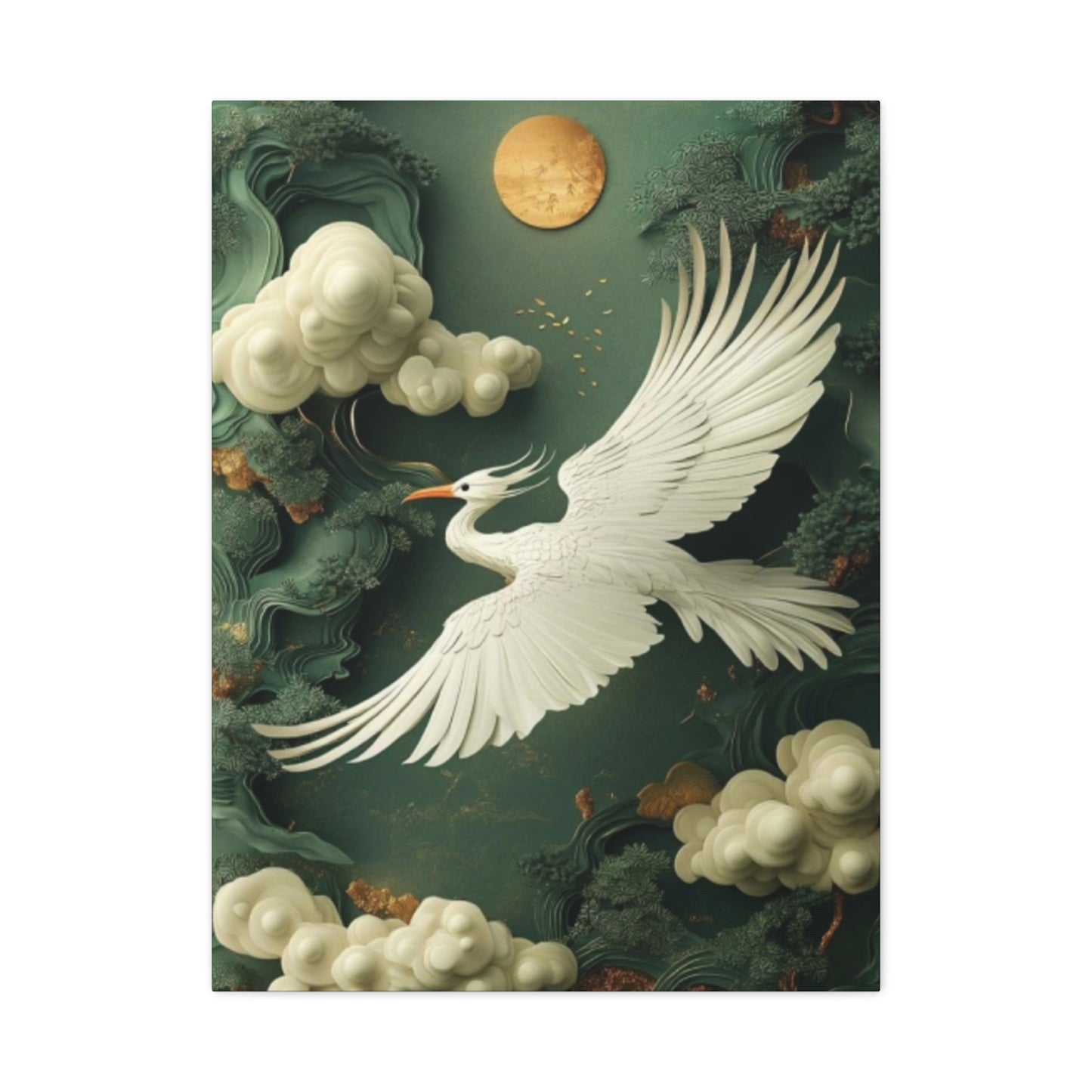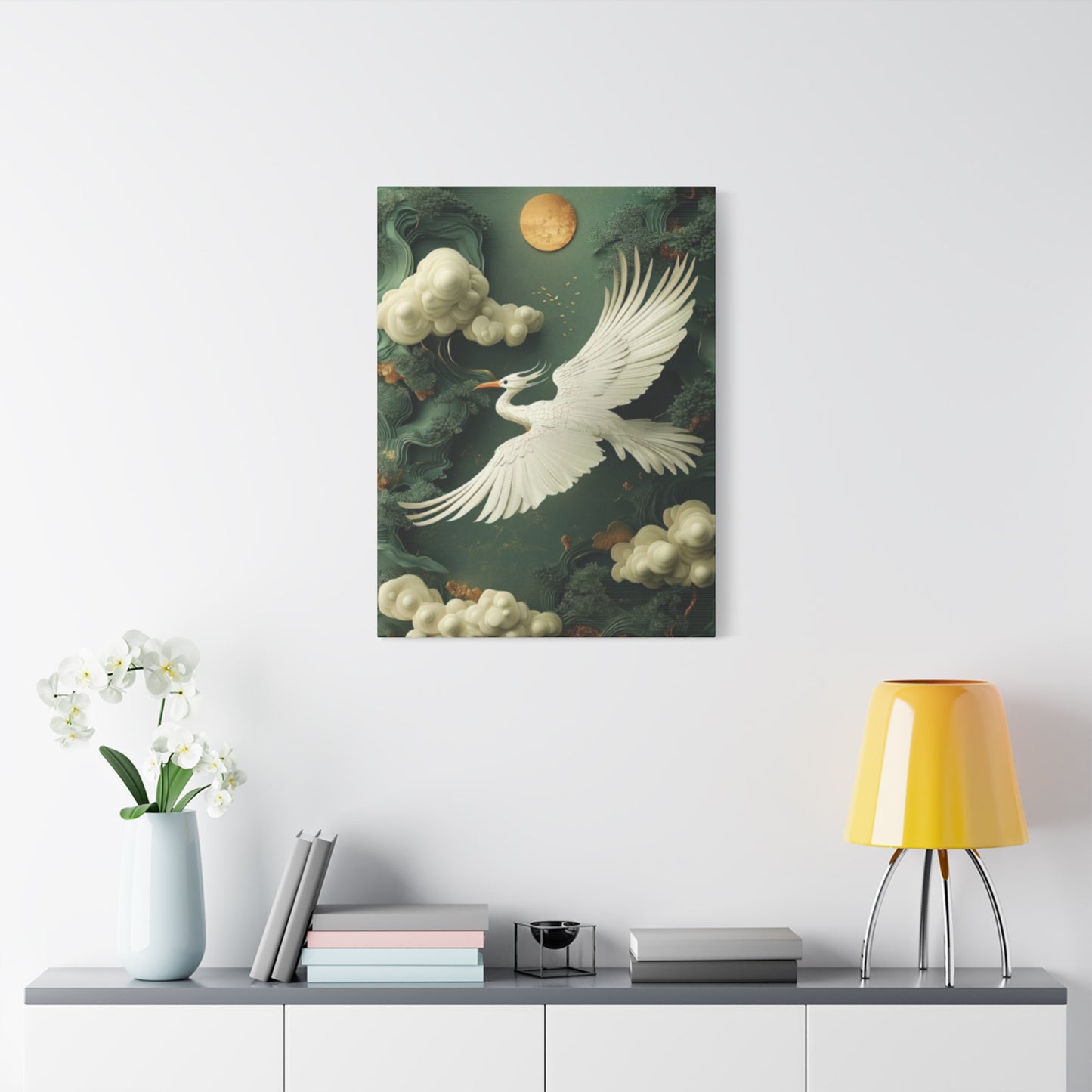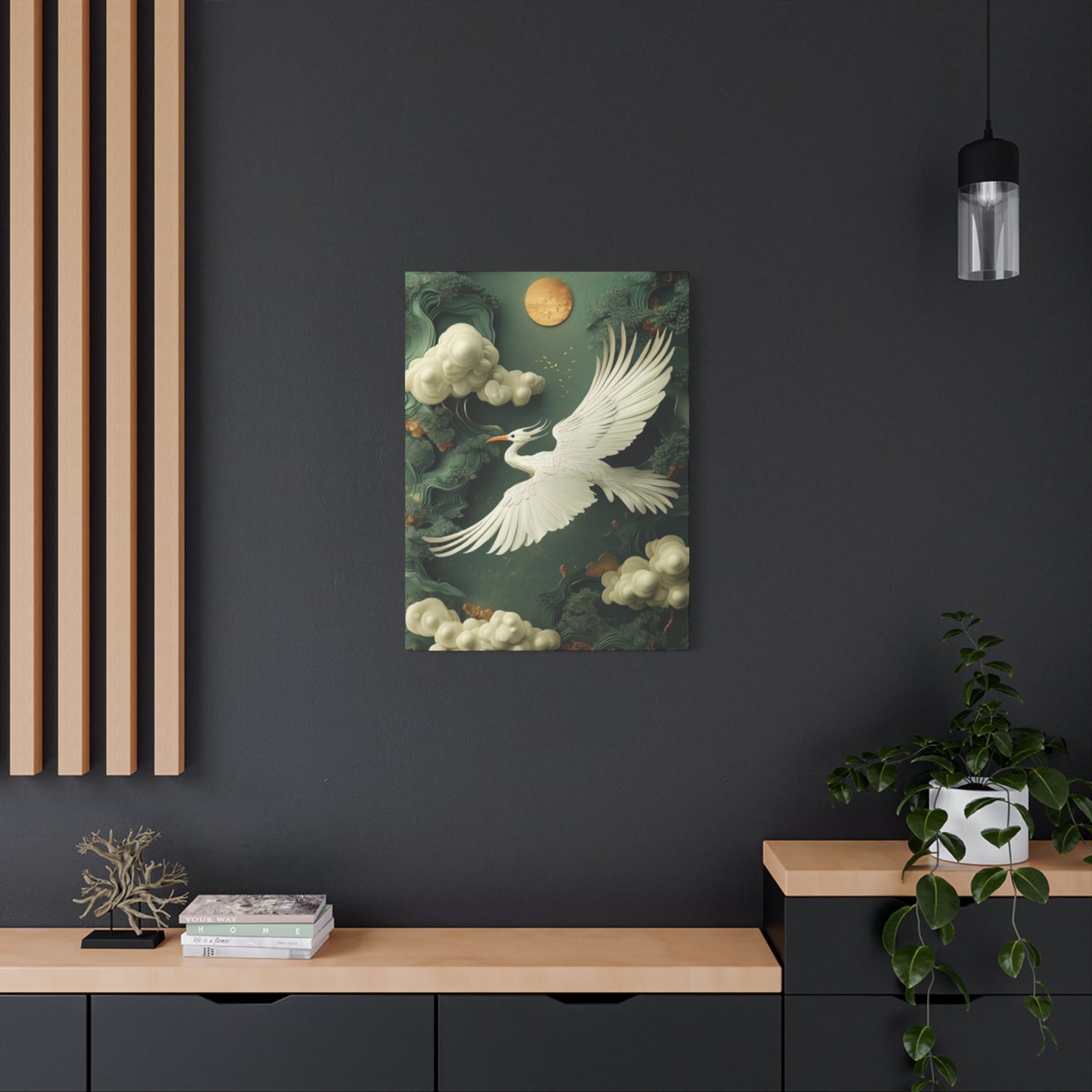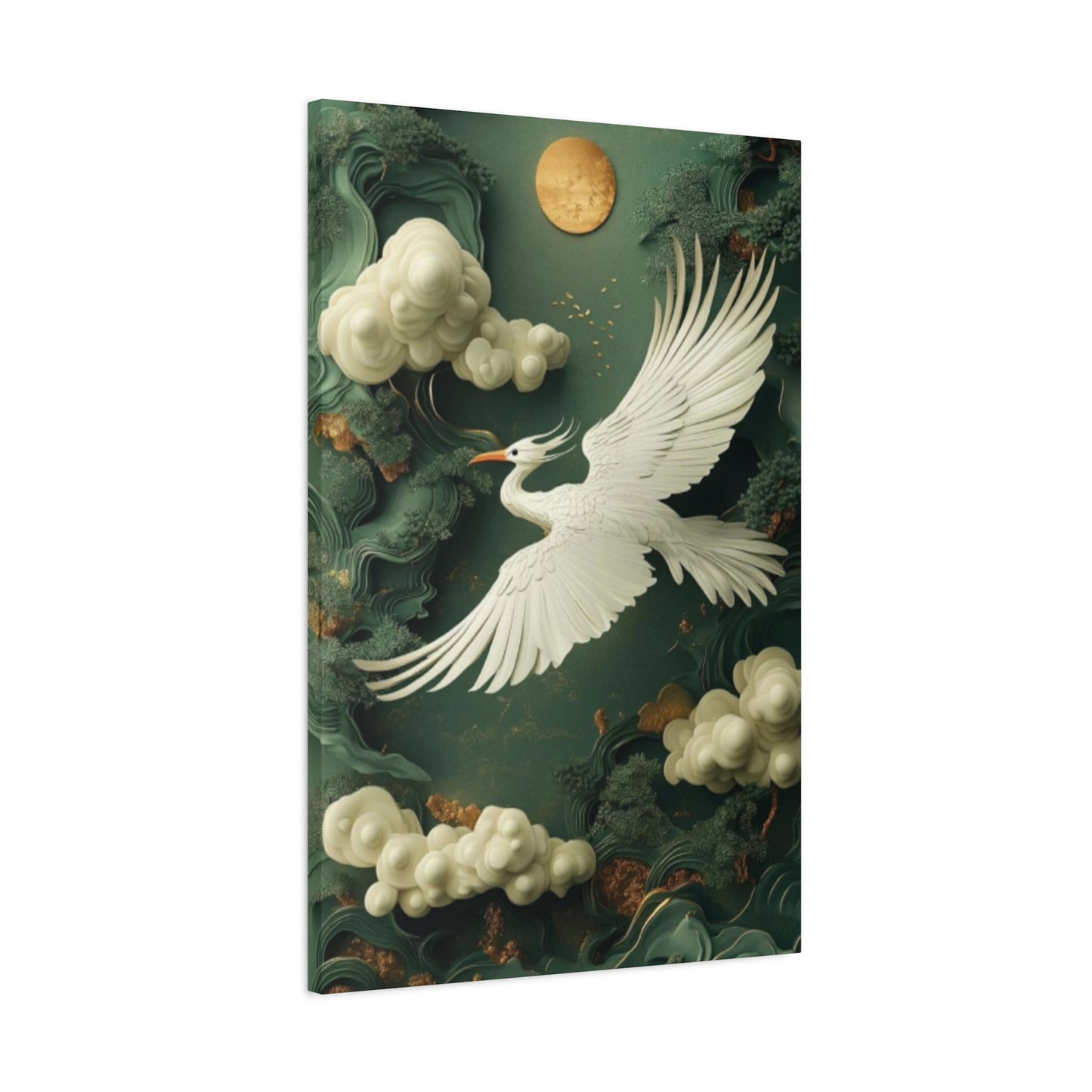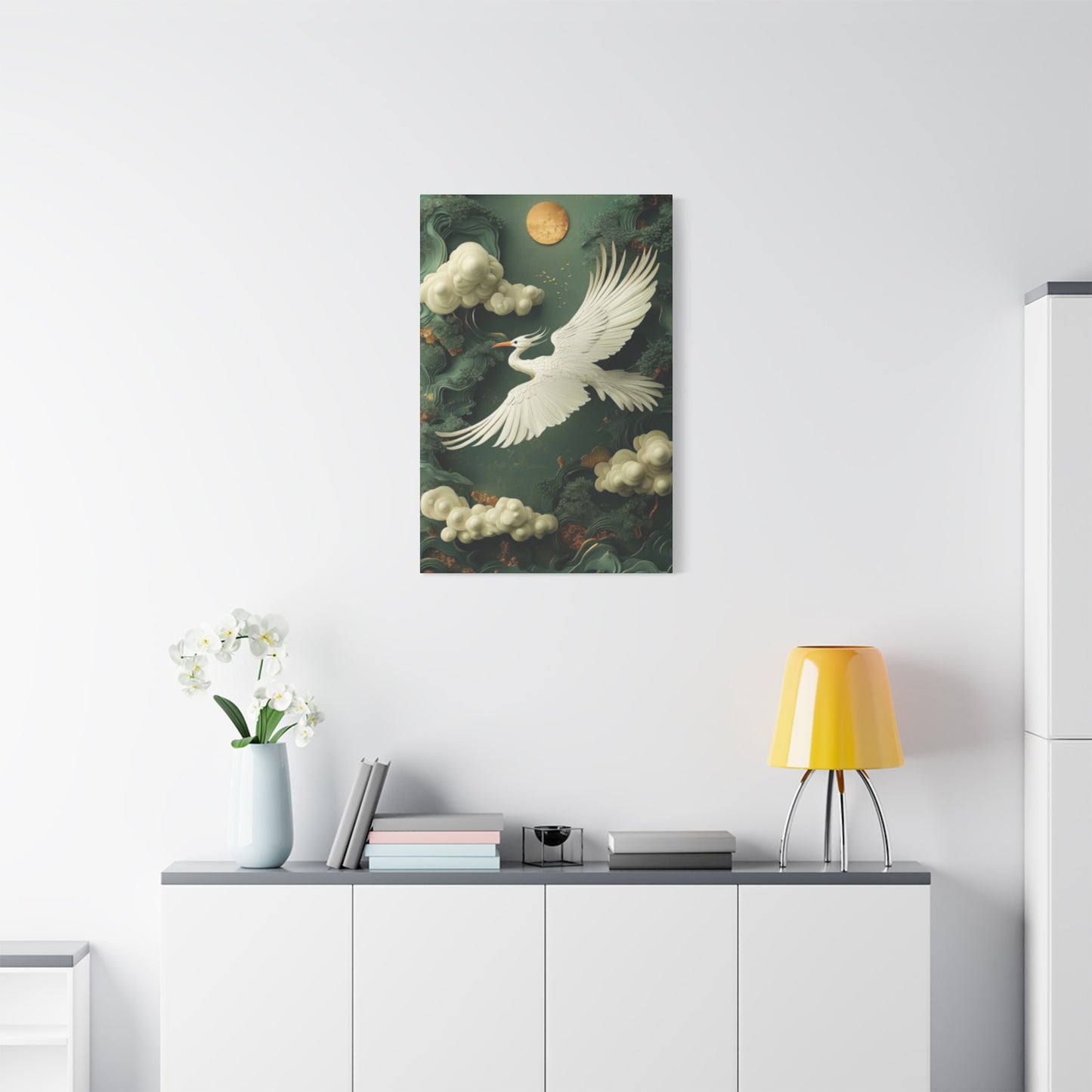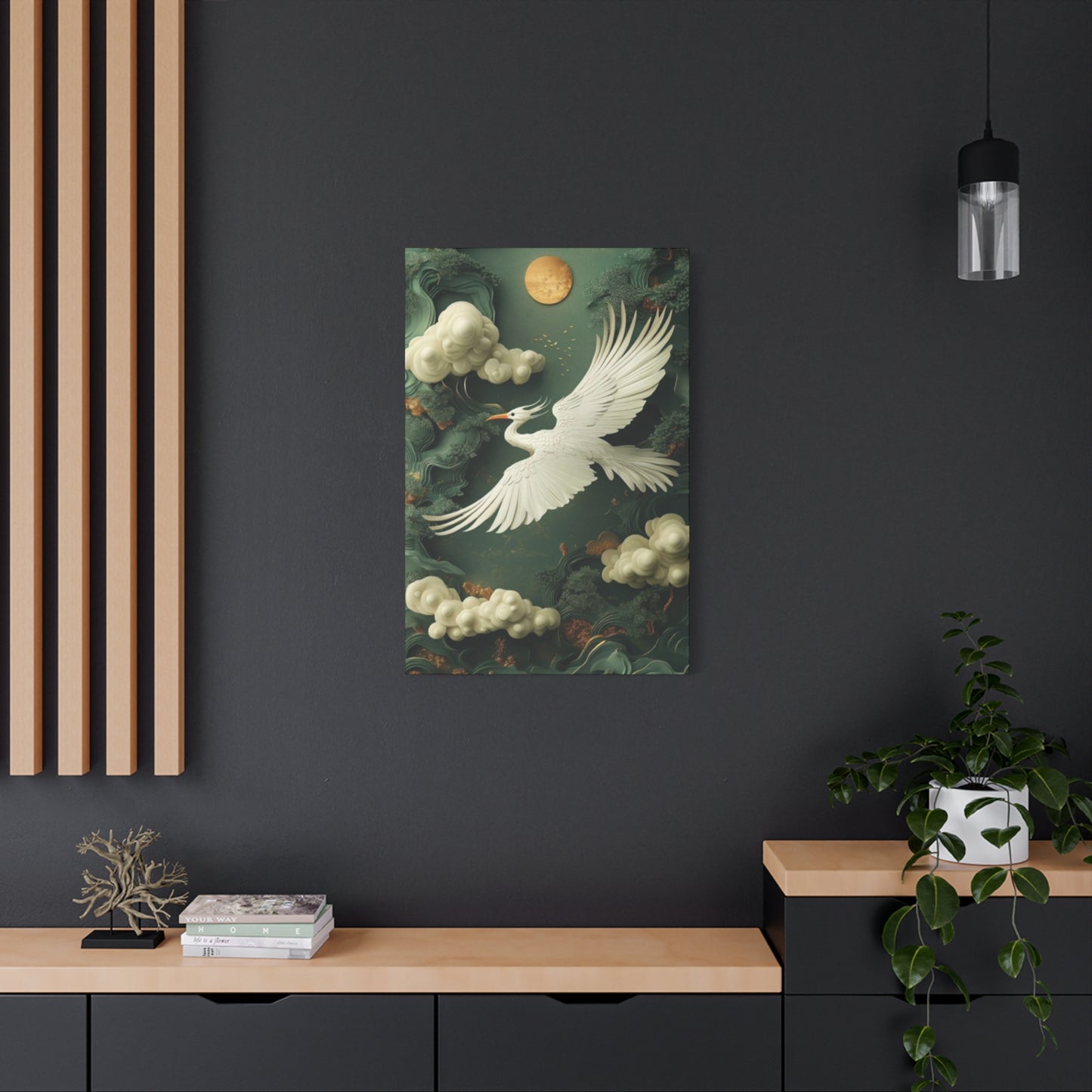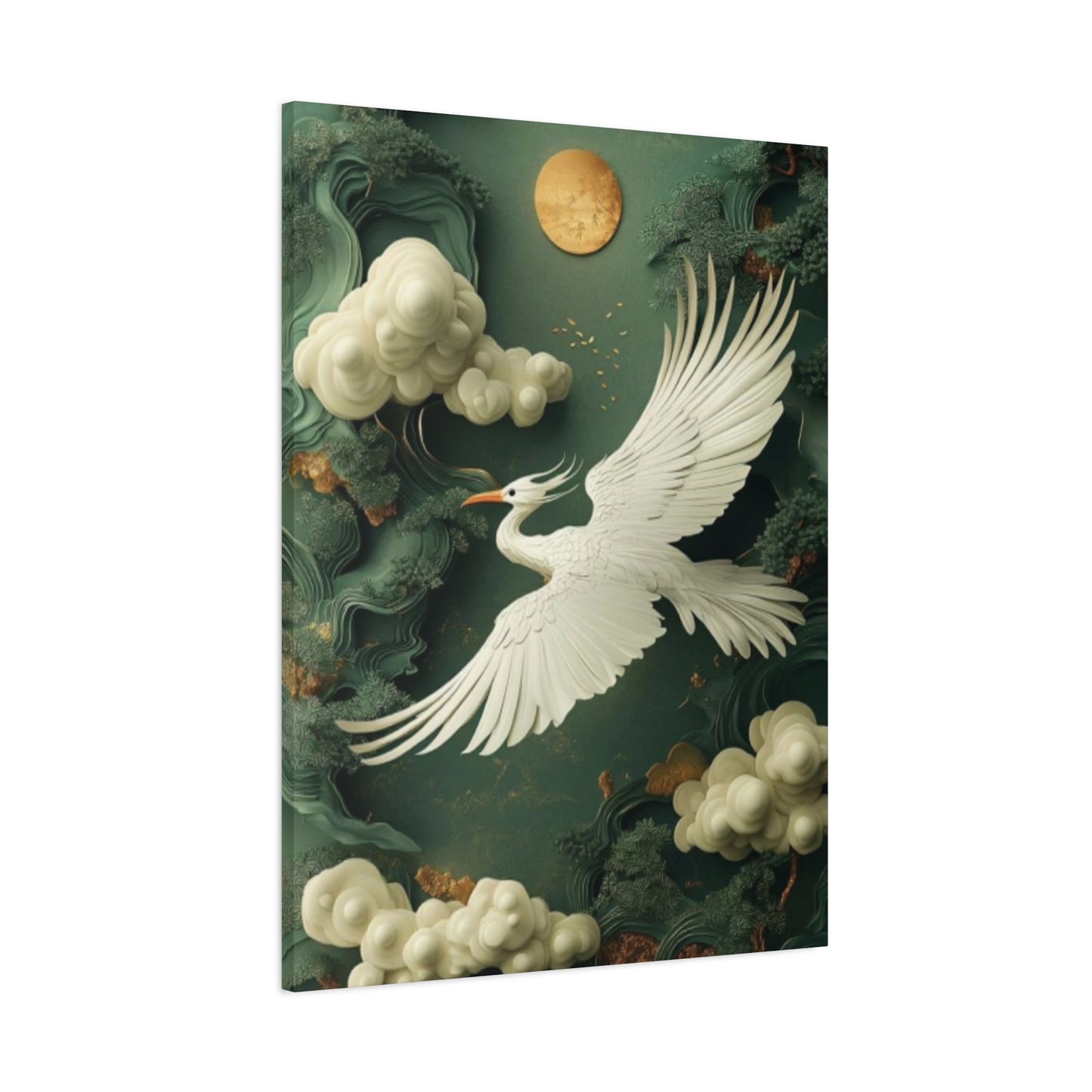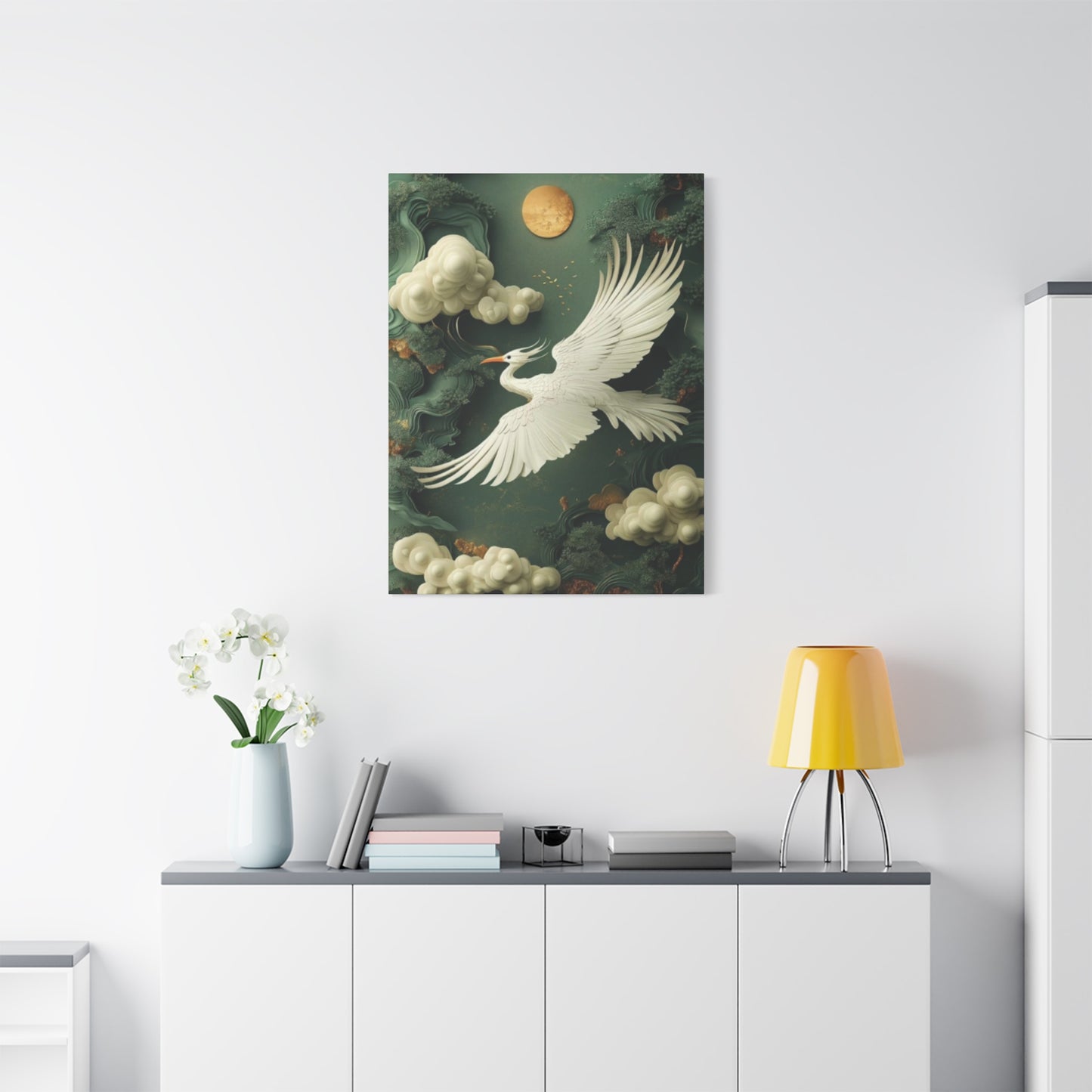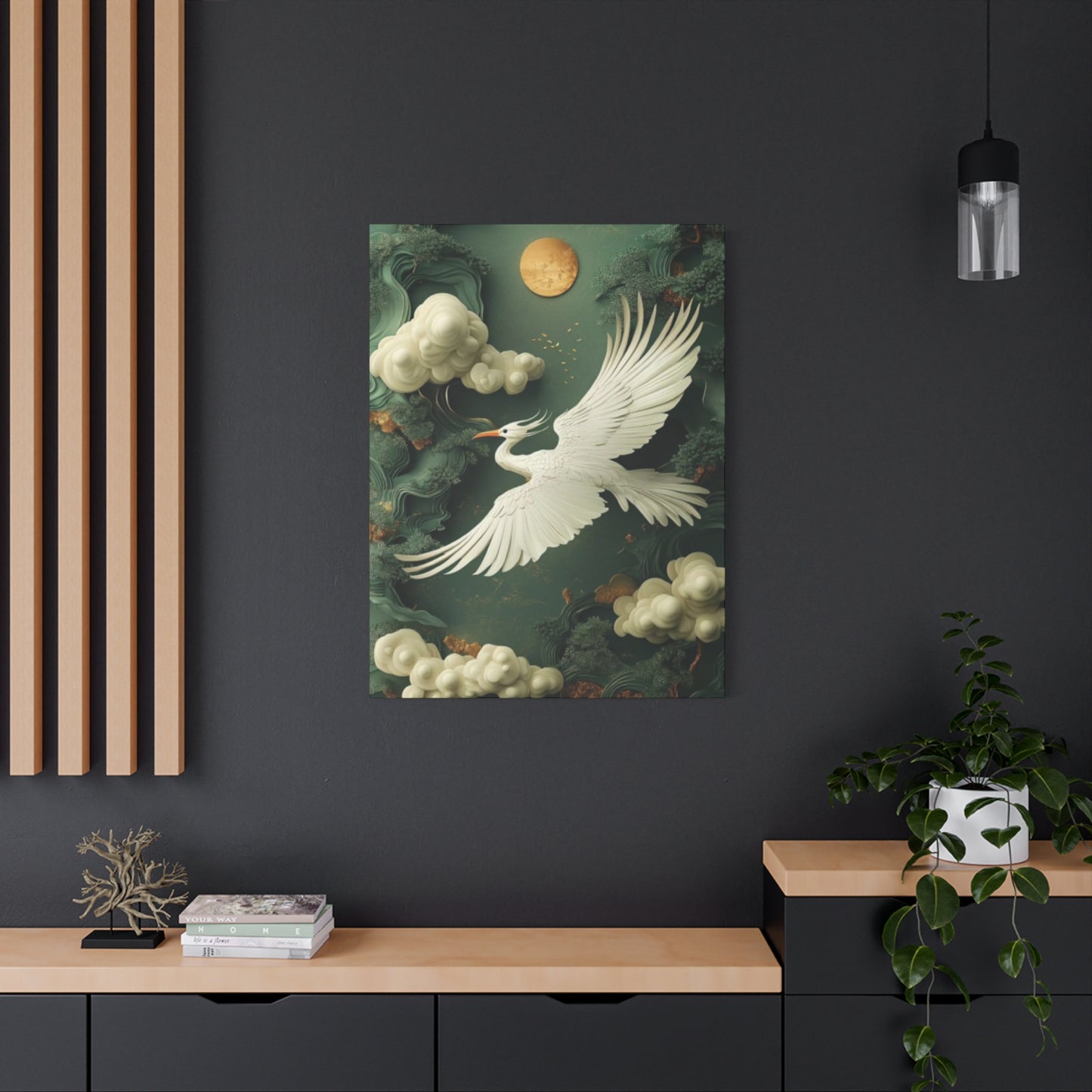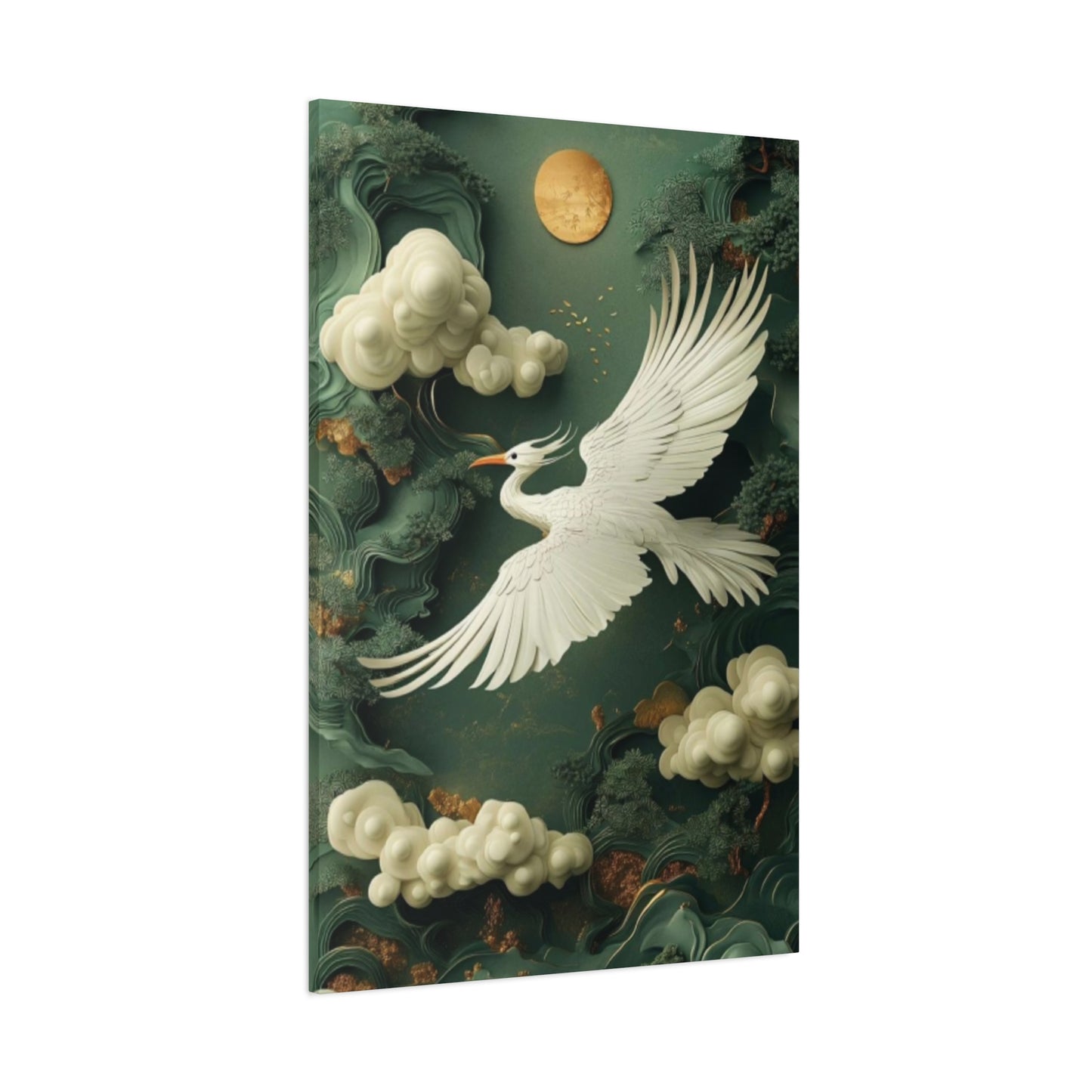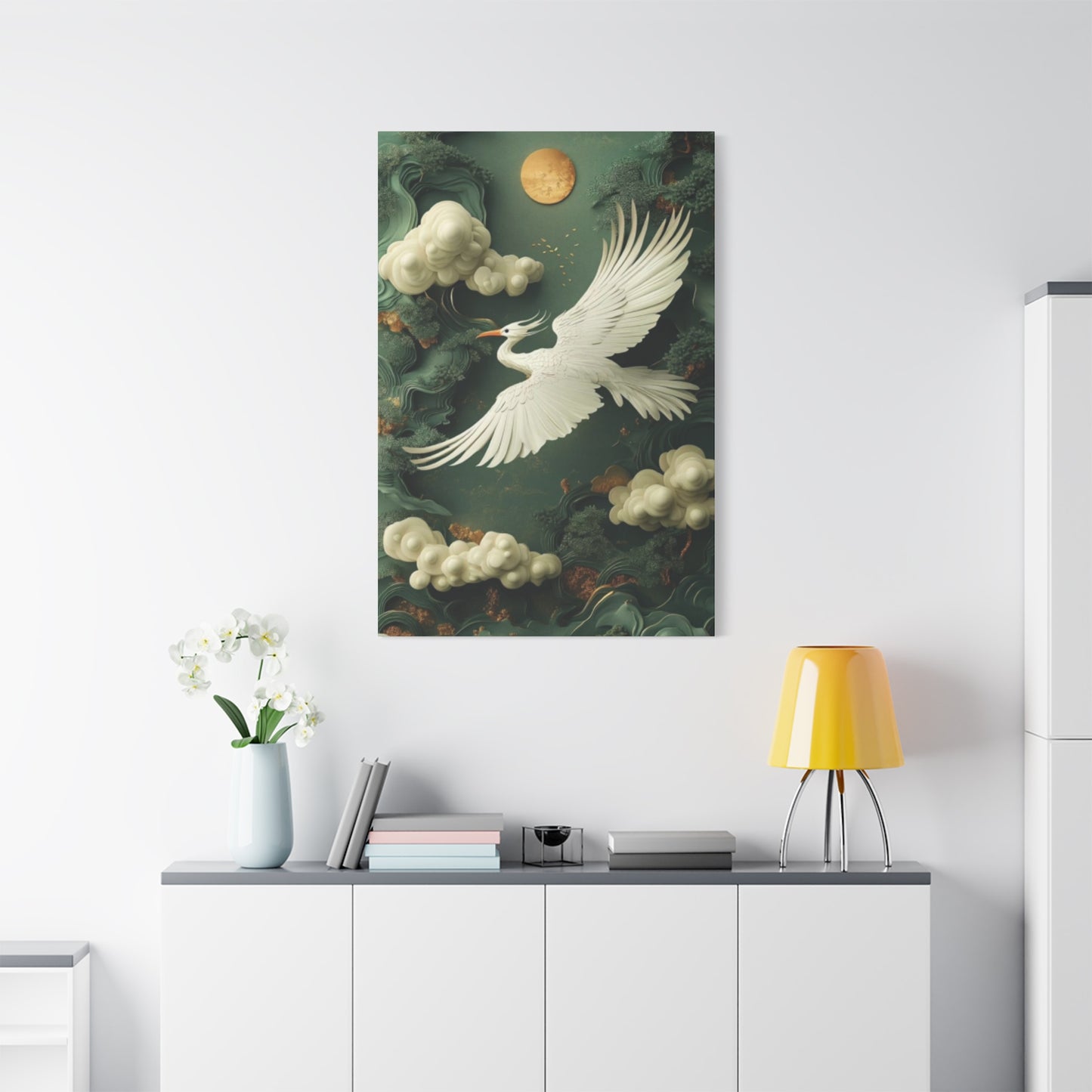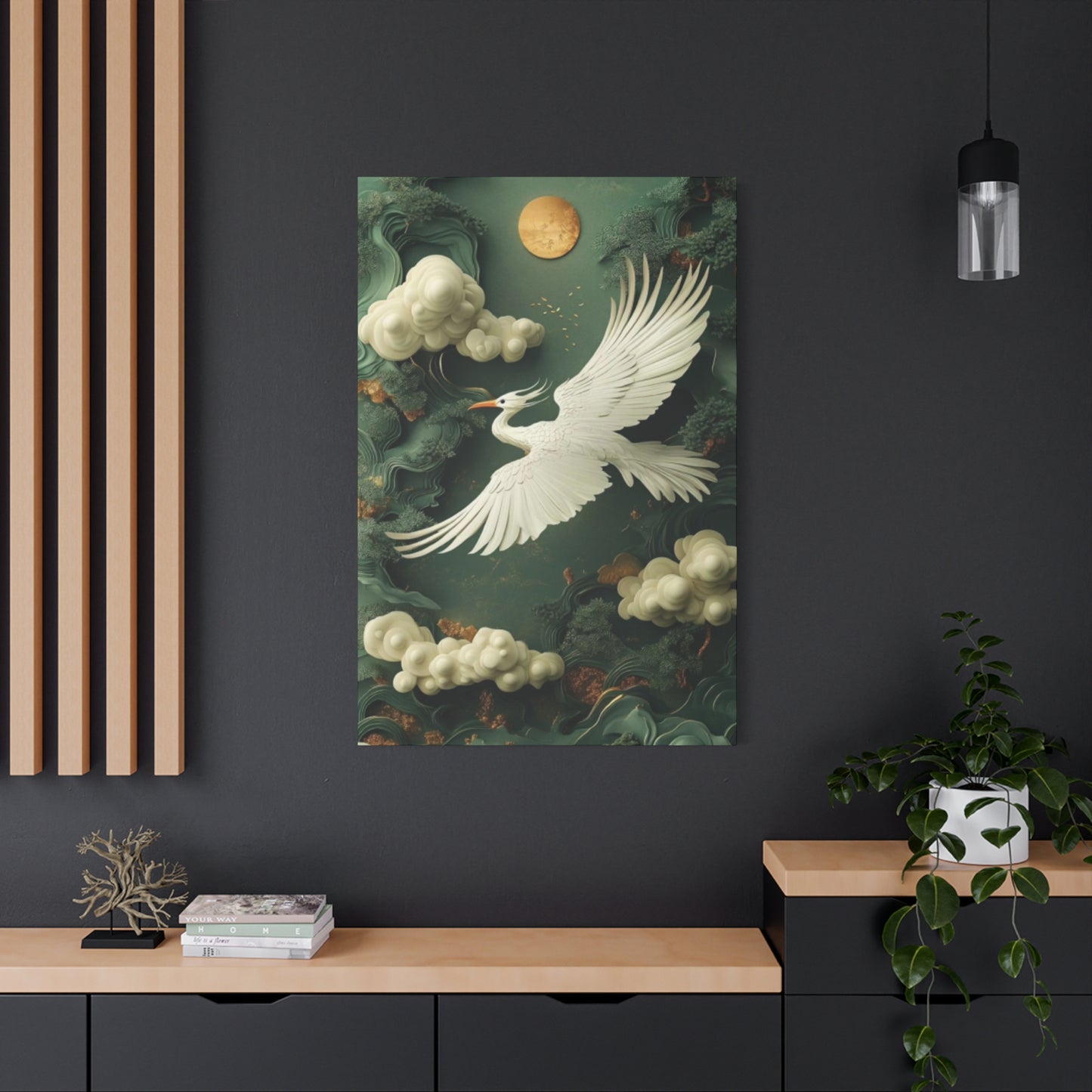Step-by-Step Guide to Decorating with Herons and Moon Drawing Wall art
The mesmerizing combination of herons and lunar imagery has captivated artists and art enthusiasts for centuries, creating some of the most serene and meaningful pieces in contemporary home decoration. These majestic birds, often depicted in tranquil moments beneath glowing celestial orbs, represent a perfect harmony between earth and sky, creating visual narratives that speak to our deepest connections with nature. When we examine the growing popularity of heron and moon wall art, we discover not just aesthetic appeal but profound symbolic meaning that resonates with viewers across cultures and generations.
The ethereal quality of moonlit scenes featuring these graceful wading birds has made them increasingly sought-after choices for those looking to bring tranquility and natural beauty into their living environments. Whether rendered in delicate pencil sketches, bold acrylic paintings, or minimalist line drawings, these artistic compositions offer viewers a moment of peaceful contemplation in our increasingly busy world. The combination of these two powerful natural elements creates artwork that functions as both decorative enhancement and meditative focal point.
Contemporary artists have embraced this timeless theme, producing works that range from photorealistic representations to abstract interpretations, each capturing different aspects of the mysterious relationship between these elegant birds and the celestial body that illuminates their nocturnal activities. The popularity of heron and moon wall art reflects our collective desire to reconnect with nature while creating living environments that promote peace, reflection, and spiritual well-being.
Herons and Moon: A Peaceful Night Scene in Art
The artistic portrayal of herons beneath moonlit skies represents one of nature's most tranquil and contemplative scenes. These nocturnal compositions capture the quiet dignity of these magnificent birds as they stand sentinel in shallow waters, their silhouettes elegantly framed against the soft glow of lunar light. Artists throughout history have been drawn to this particular subject matter because it embodies the perfect balance between movement and stillness, between the earthbound and the celestial.
When examining successful heron and moon compositions, we notice how artists carefully orchestrate the relationship between light and shadow to create depth and atmosphere. The moon serves not merely as a backdrop but as an active participant in the scene, casting silver reflections across water surfaces and creating dramatic contrasts that highlight the heron's graceful form. This interplay of light transforms ordinary wetland scenes into magical, almost mystical environments that invite prolonged contemplation.
The technical execution of such pieces requires considerable skill in understanding how moonlight behaves differently from sunlight. Artists must master the subtle gradations of blue-gray tones that characterize nighttime scenes while ensuring that their subjects remain clearly defined and visually compelling. The challenge lies in creating sufficient contrast to make the heron visible while maintaining the soft, dreamlike quality that makes moonlit scenes so appealing.
Many contemporary artists approach this subject matter with various stylistic interpretations, from hyperrealistic renderings that capture every feather detail to impressionistic works that focus on mood and atmosphere over precise representation. Some choose to emphasize the stark contrast between the dark bird silhouette and the bright lunar disc, while others prefer more subtle treatments that blend the elements harmoniously within a unified tonal palette.
The emotional impact of these peaceful night scenes extends beyond mere aesthetic appreciation. Viewers often report feeling a sense of calm and introspection when observing well-executed heron and moon compositions. This psychological response occurs because these images tap into our innate connection to natural rhythms and cycles, reminding us of quiet moments spent in nature and the restorative power of solitude.
Artists working in this genre frequently incorporate additional elements to enhance the narrative quality of their work. Cattails swaying gently in evening breezes, ripples spreading across still water surfaces, or distant mountains silhouetted against star-filled skies all contribute to creating complete environments that transport viewers into these serene nocturnal worlds. These supporting details help establish context and provide visual pathways that guide the eye through the composition while reinforcing the overall theme of peaceful coexistence between wildlife and natural elements.
The commercial success of heron and moon artwork reflects broader cultural trends toward mindfulness and environmental consciousness. As people seek ways to create more peaceful living environments, these gentle nocturnal scenes offer an accessible way to bring nature's calming influence indoors. The universal appeal of such imagery transcends specific decorating styles, making it suitable for everything from traditional country homes to modern minimalist apartments.
Symbolism in Heron and Moon Drawings
The symbolic richness of heron and moon imagery draws from deep cultural traditions and universal human experiences, creating artwork that resonates on multiple levels of meaning. Herons have long been associated with patience, wisdom, and self-reliance across many cultures, while the moon represents cycles, intuition, and the feminine divine. When combined in artistic compositions, these symbols create powerful visual metaphors that speak to fundamental aspects of human existence and our relationship with the natural world.
In many Eastern traditions, herons symbolize longevity, good fortune, and spiritual purity. Their ability to stand motionless for extended periods while hunting has made them emblems of patience and focused meditation. When depicted beneath moonlight, these qualities become amplified, suggesting deep contemplation and connection to higher spiritual realms. The moon's association with cycles of renewal and transformation adds layers of meaning related to personal growth and spiritual evolution.
Western artistic traditions have similarly embraced the heron as a symbol of solitude and introspection. The bird's solitary hunting habits and preference for quiet marshlands align with romantic notions of the contemplative individual finding wisdom through communion with nature. When artists combine this imagery with lunar symbolism, they create visual representations of the journey toward self-knowledge and inner peace.
The crescent moon holds particular significance in heron drawings, as its curved shape often echoes the graceful arc of the bird's neck. This visual harmony creates compositions where form and meaning reinforce each other, resulting in artwork that feels both balanced and symbolically coherent. Artists frequently exploit this natural correspondence to create flowing, organic compositions that seem to grow naturally from the canvas rather than being artificially imposed upon it.
Color symbolism plays an important role in these works as well. The cool blues and silvers typically associated with moonlight suggest tranquility, wisdom, and emotional depth, while the darker tones used for the heron's silhouette represent mystery, strength, and groundedness. This contrast between light and dark, between celestial and earthbound elements, creates visual tension that keeps viewers engaged while reinforcing the symbolic dialogue between different aspects of existence.
Many contemporary artists working with heron and moon imagery consciously incorporate these symbolic elements to create works that function as visual meditations on themes of balance, patience, and spiritual seeking. The popularity of such pieces in therapeutic and wellness environments testifies to their effectiveness in promoting calm contemplation and emotional healing. Healthcare facilities, yoga studios, and meditation centers frequently choose this type of artwork because of its proven ability to create peaceful, reflective atmospheres.
The seasonal symbolism embedded in these compositions adds another layer of interpretive richness. Herons depicted during different lunar phases can suggest various stages of personal or spiritual development, with the full moon representing completion or enlightenment and the new moon suggesting new beginnings or introspective periods. Artists often use subtle environmental cues to reinforce these themes, incorporating elements like bare winter branches for contemplation themes or lush summer foliage for growth and abundance narratives.
Cultural interpretations of these symbols continue to evolve as contemporary artists bring fresh perspectives to traditional themes. Some modern interpretations focus on environmental consciousness, using heron and moon imagery to highlight themes of conservation and humanity's responsibility to protect natural habitats. Others explore psychological themes, using the solitary heron as a metaphor for individual resilience and the moon as a symbol of emotional cycles and healing.
Choosing Heron-Moon Wall Art for Your Living Environment
Selecting the perfect heron-moon wall art requires careful consideration of multiple factors that will influence both the aesthetic impact and the long-term satisfaction you derive from your chosen piece. The decision-making process begins with understanding your existing décor style, room dimensions, lighting conditions, and the emotional atmosphere you wish to create. These foundational elements will guide you toward artwork that not only complements your current environment but also enhances your daily living experience.
Room size plays a crucial role in determining the appropriate scale for your heron-moon artwork. Large, open areas can accommodate substantial pieces that serve as dramatic focal points, while smaller rooms benefit from more modestly sized works that provide visual interest without overwhelming the environment. Consider the viewing distance when selecting size – artwork placed in hallways or areas where viewers pass quickly can handle more detailed compositions than pieces intended for close contemplation in intimate seating areas.
Lighting conditions significantly impact how heron-moon artwork appears in your living environment. Natural lighting changes throughout the day, affecting color perception and detail visibility. North-facing rooms with consistent, cool light showcase the subtle tonal variations in moonlit scenes particularly well, while south-facing rooms with warm, variable light may require careful consideration of how changing conditions will affect the artwork's appearance. Artificial lighting should complement rather than compete with the artwork's inherent mood and atmosphere.
The existing color palette in your room influences which style of heron-moon art will integrate most successfully. Monochromatic schemes benefit from artwork that introduces subtle color variations while maintaining overall tonal harmony. Rooms with established color themes can accommodate pieces that either complement existing hues or provide dramatic contrast as accent elements. Consider how the cool blues and silvers typical of moonlit scenes will interact with your current furnishings and wall treatments.
Emotional considerations are equally important when selecting heron-moon wall art. These pieces naturally promote feelings of tranquility and contemplation, making them excellent choices for bedrooms, meditation areas, or quiet reading nooks. However, their calming influence might not be appropriate for areas where you want to maintain high energy levels, such as home gyms or active children's play areas. Match the artwork's emotional tone to the activities you'll be conducting in each particular room.
The artistic style of heron-moon pieces varies dramatically, from photorealistic paintings to abstract interpretations to minimalist line drawings. Your personal aesthetic preferences and the overall design philosophy of your home should guide this choice. Traditional décor schemes often benefit from more realistic representations, while contemporary environments might call for stylized or abstract treatments. Consider whether you prefer artwork that blends seamlessly with your existing décor or pieces that provide striking contrast and visual interest.
Budget considerations extend beyond the initial purchase price to include framing, installation, and potential future maintenance costs. Original paintings and limited edition prints command higher prices but offer greater uniqueness and potential value appreciation. Mass-produced prints provide affordable access to heron-moon imagery but may lack the individual character that makes artwork truly personal and meaningful. Consider the long-term value you place on having unique versus accessible art in your living environment.
Authenticity and artist credentials become important factors when investing in higher-end heron-moon wall art. Research the artist's background, training, and exhibition history to ensure you're making an informed purchase. Documented provenance and authenticity certificates add value and provide important information for insurance and resale purposes. Supporting living artists through direct purchases often provides opportunities for customization and personal connection to the creative process.
The intended longevity of your décor plans should influence your selection criteria. If you frequently redecorate or move, choosing versatile pieces that adapt to various environments makes practical sense. Conversely, if you're creating a long-term living environment, investing in larger, more significant pieces that will serve as permanent focal points may be worthwhile. Consider how your tastes and living situations might evolve over time when making these important artistic investments.
Minimalist Heron and Moon Line Art
The minimalist approach to heron and moon line art represents a refined artistic philosophy that achieves maximum emotional impact through careful reduction of visual elements to their most essential forms. This aesthetic movement, which gained prominence in the mid-20th century, continues to influence contemporary artists who seek to capture the serene beauty of nocturnal wildlife scenes using only the most necessary lines and shapes. The challenge in creating effective minimalist heron-moon compositions lies in distilling complex natural forms into simple, elegant statements that retain their recognizable characteristics while achieving powerful visual impact.
Successful minimalist line art requires masterful understanding of proportion, balance, and negative space utilization. Artists must identify the most characteristic features of herons – their long necks, angular legs, and distinctive silhouettes – and represent these elements using minimal linear information. Similarly, the moon's circular form must be suggested rather than explicitly detailed, often appearing as a simple geometric shape that provides compositional anchor and symbolic meaning without overwhelming the delicate bird form.
The beauty of minimalist heron and moon line art lies in its ability to suggest rather than describe. Viewers' imaginations fill in the details that artists deliberately omit, creating personal connections that detailed representations might not achieve. This collaborative aspect between artist and viewer makes minimalist works particularly engaging for long-term living environments, as people continue discovering new interpretations and emotional responses over time.
Contemporary digital technologies have expanded possibilities for creating and reproducing minimalist heron-moon line art. Vector graphics programs allow artists to create perfectly clean lines and precise geometric relationships that maintain their clarity at any reproduction size. This technological capability has made minimalist wildlife art more accessible to broader audiences while maintaining the aesthetic purity that defines the movement. Print-on-demand services have democratized access to these designs, allowing people to enjoy minimalist heron-moon art without the expense of original works.
The color palette in minimalist line art typically relies on high contrast relationships, often featuring black lines on white backgrounds or white lines on dark surfaces. Some artists introduce single accent colors to provide focal points or enhance symbolic meaning – a golden moon against black linework, for example, or blue water suggested by minimal horizontal lines. These restricted color choices reinforce the minimalist philosophy while allowing for subtle emotional manipulation through color psychology.
Environmental consciousness influences many contemporary minimalist artists working with heron-moon themes. The stripped-down aesthetic reflects broader cultural movements toward sustainability and conscious consumption. By eliminating visual excess, these works encourage viewers to consider essential relationships between humans, wildlife, and natural cycles. The simplicity of execution often translates to more sustainable production methods, appealing to environmentally conscious consumers.
Educational institutions frequently choose minimalist heron-moon line art for their calming influence and universal appeal. The non-threatening, accessible nature of these works makes them suitable for diverse audiences while promoting contemplation and focus. Libraries, study areas, and classrooms benefit from artwork that provides visual interest without creating distractions or overstimulation. The symbolic associations with patience and wisdom make heron imagery particularly appropriate for learning environments.
The technical execution of minimalist line art requires different skills than more detailed artistic approaches. Artists must develop confident, expressive line quality that conveys maximum information with minimum means. Each stroke carries significant weight in determining the overall success of the composition. This pressure can be intimidating for beginning artists but often results in more deliberate, thoughtful creative decisions that strengthen the final artwork.
Commercial applications of minimalist heron-moon line art have expanded into various product categories beyond traditional wall hangings. Logo designers incorporate these clean, recognizable forms into corporate identities for environmentally focused businesses. Textile designers apply minimalist wildlife motifs to home furnishings, creating coordinated environments that extend the artistic theme throughout living areas. The versatility of simple line art makes it adaptable to various scales and applications while maintaining its essential character.
Serenity in Heron and Moon Drawing Wall Prints
The concept of serenity in heron and moon drawing wall prints extends beyond mere aesthetic appeal to encompass the profound psychological and emotional effects these images can have on living environments. Scientific research into environmental psychology has consistently demonstrated that artwork depicting calm, natural scenes can significantly reduce stress levels, lower blood pressure, and promote overall mental well-being. Heron and moon compositions are particularly effective in creating these beneficial effects because they combine multiple elements known to promote relaxation and positive mental states.
The gentle, flowing lines typically found in heron drawings naturally guide the eye in smooth, comfortable movements that mirror the relaxation responses our bodies experience during meditation or deep breathing exercises. When combined with the soft, circular form of lunar imagery, these compositions create visual rhythms that encourage viewers to slow down and enter more contemplative states of mind. This physiological response occurs unconsciously, making heron-moon wall prints effective tools for creating consistently peaceful environments.
Color psychology plays a fundamental role in how serenity manifests in these artistic works. The cool blues, soft grays, and gentle whites commonly used in moonlit scenes have been scientifically proven to reduce heart rate and promote feelings of calm and stability. These colors trigger parasympathetic nervous system responses that counteract the stress and anxiety produced by our modern lifestyle demands. When people spend time in rooms decorated with heron-moon wall prints, they often report improved sleep quality and reduced feelings of tension.
The symbolic associations inherent in heron and moon imagery contribute significantly to their serene qualities. Herons represent patience, stillness, and mindful observation – qualities that our culture increasingly values as antidotes to constant connectivity and information overload. The moon's cyclical nature reminds viewers of natural rhythms and the importance of rest and renewal in balanced living. These symbolic messages work subconsciously to reinforce behavioral patterns that support mental health and emotional stability.
Different artistic styles of heron-moon wall prints produce varying levels and types of serenity. Highly detailed, realistic renderings can provide engaging visual exploration that occupies the mind and provides distraction from stressful thoughts. Conversely, simplified or abstract interpretations allow viewers to project their own peaceful associations onto the imagery, creating personalized relaxation experiences. The choice between these approaches depends on individual preferences and the specific therapeutic goals for each environment.
Workplace environments have increasingly recognized the value of incorporating serene heron-moon wall prints to improve employee satisfaction and productivity. Open office plans, which can create sensory overload and stress, benefit significantly from strategically placed artwork that provides visual rest areas and promotes mental restoration. Healthcare facilities have long understood the healing potential of peaceful nature imagery, with many hospitals and clinics specifically choosing heron-moon compositions for patient areas where anxiety reduction is paramount.
The size and placement of heron-moon wall prints significantly influence their ability to create serene environments. Large-scale pieces can transform entire room atmospheres, serving as visual anchors that establish calm, contemplative moods. Smaller prints work effectively in intimate settings where close viewing allows for detailed contemplation and personal connection with the imagery. Proper placement at eye level and in locations where natural viewing occurs maximizes the prints' beneficial effects on daily life routines.
Seasonal variations in heron-moon wall prints can enhance their serenity-promoting qualities by connecting viewers to natural cycles and rhythms. Spring scenes with nesting activity suggest renewal and hope, while winter compositions emphasize quietude and introspection. These seasonal themes help people maintain connection to natural time patterns that support healthy circadian rhythms and emotional well-being. Some people choose to rotate different seasonal heron-moon prints to maintain fresh visual interest while preserving the overall serene atmosphere.
The growing popularity of meditation and mindfulness practices has increased demand for artwork that supports these activities. Heron-moon wall prints serve as excellent focal points for meditation sessions, providing visual anchors that help practitioners maintain attention and enter deeper states of relaxation. The natural world imagery connects indoor meditation practices to outdoor environments, bridging the gap between urban living and nature connection that many people seek for psychological balance.
Herons Under Moonlight: Canvas vs. Paper Prints
The choice between canvas and paper prints for heron under moonlight artwork involves numerous considerations that affect both the immediate visual impact and long-term satisfaction with your artistic investment. Each medium offers distinct advantages and limitations that influence how the artwork appears, feels, and ages within your living environment. Understanding these differences helps ensure that your chosen format enhances rather than compromises the serene beauty of heron-moon compositions.
Canvas prints provide a substantial, gallery-like presence that transforms heron-moon artwork into significant visual statements. The texture of canvas adds depth and visual interest to moonlit scenes, creating subtle shadows and highlights that enhance the three-dimensional quality of the imagery. This tactile element engages viewers on multiple sensory levels, making the artwork feel more substantial and permanent than flat paper alternatives. The stretched canvas format also eliminates the need for glass protection, allowing for more intimate viewing without reflective barriers.
The durability advantages of canvas prints make them particularly suitable for high-traffic areas or environments where long-term display is intended. Canvas materials resist fading better than many paper alternatives when properly treated, and they're less susceptible to damage from minor impacts or handling. The absence of glass protection eliminates risks of breakage while reducing weight considerations for wall mounting. These practical advantages make canvas prints popular choices for commercial installations and family homes where durability is paramount.
However, canvas prints may not capture the finest details of intricate heron-moon drawings with the same precision as high-quality paper prints. The texture of canvas can interfere with subtle line work or delicate gradations that are crucial to the success of detailed nocturnal scenes. Artists who work primarily in detailed pen-and-ink techniques or precise pencil drawings often prefer paper reproduction for its ability to maintain their original precision and nuanced tonal relationships.
Paper prints offer superior detail reproduction and color accuracy, making them ideal for artwork where precision and subtlety are essential. High-quality archival papers can produce incredibly fine gradations in the blues and grays that characterize moonlit scenes, while maintaining sharp definition in heron silhouettes and feather details. The smooth surface of quality paper allows for precise reproduction of original brushstrokes, pencil marks, or pen lines that contribute to the artwork's character and authenticity.
The variety of paper types available for heron-moon prints provides opportunities to enhance specific qualities of the artwork. Matte papers reduce glare and provide even illumination across the image surface, while glossy papers can intensify colors and create more dramatic contrasts between light and dark areas. Textured art papers can add subtle visual interest without overwhelming delicate imagery, providing a middle ground between smooth paper and canvas texture.
Cost considerations often influence the canvas versus paper decision, with paper prints generally offering more affordable access to heron-moon artwork. This economic advantage allows for larger sizes or multiple pieces within the same budget, potentially creating more comprehensive decorative schemes. However, the additional expense of professional framing for paper prints can offset initial savings, especially when protective glass and high-quality matting are included.
Professional framing requirements for paper prints create both opportunities and challenges. Quality matting can enhance heron-moon compositions by providing visual breathing room and color coordination with existing décor. UV-protective glass preserves the artwork while allowing clear viewing, though it introduces potential reflection issues that require careful consideration of lighting and placement. The framing process also allows for customization that coordinates with specific decorative schemes and personal preferences.
Canvas prints' ready-to-hang convenience appeals to many buyers who prefer immediate installation without additional framing expenses. Modern canvas printing techniques include protective coatings that enhance durability and color stability, making professionally printed canvas a viable long-term option. The gallery-wrap format, where the image extends around the canvas edges, creates a modern, contemporary appearance that works well in minimalist or modern decorative schemes.
Environmental considerations may influence medium selection for environmentally conscious consumers. Canvas production typically involves more synthetic materials and chemical treatments than paper alternatives, though both options can be produced using sustainable practices. Some specialty printers offer eco-friendly canvas and paper options that minimize environmental impact while maintaining quality reproduction standards.
The viewing distance and lighting conditions in your intended display area should inform your choice between canvas and paper prints. Canvas texture becomes more apparent at close viewing distances, which can either enhance or detract from the artwork depending on the original style and your personal preferences. Paper prints maintain consistent appearance across various viewing distances but require protection from direct sunlight and humidity that could cause deterioration over time.
Combining Lunar and Wildlife Themes in Wall Art
The artistic combination of lunar imagery with wildlife themes represents a rich tradition that spans cultures and centuries, offering contemporary artists and art enthusiasts endless possibilities for creating meaningful, visually compelling wall art. When herons become part of these broader lunar-wildlife compositions, they contribute their unique symbolic qualities while participating in larger narrative structures that celebrate the interconnectedness of all natural phenomena. This expanded thematic approach allows for more complex artistic statements that resonate with viewers on multiple emotional and intellectual levels.
Successful integration of lunar and wildlife themes requires careful consideration of compositional balance, symbolic harmony, and visual hierarchy. The moon often serves as both light source and spiritual focal point, influencing how all other elements appear and relate to each other within the artistic framework. Herons, with their natural nocturnal activities and elegant forms, integrate seamlessly into lunar compositions while maintaining their distinctive character and symbolic significance. Other wildlife elements might include owls, bats, wolves, or nocturnal insects, each contributing their own symbolic meanings to the overall narrative.
Seasonal variations in lunar-wildlife combinations provide opportunities for creating series or collections that reflect natural cycles and rhythms. Spring compositions might feature young herons learning to hunt under crescent moons, while autumn scenes could show mature birds preparing for migration beneath harvest moons. Winter lunar-wildlife art often emphasizes survival themes and the stark beauty of bare landscapes illuminated by bright full moons. These seasonal approaches allow collectors to create rotating displays that maintain fresh interest while preserving thematic coherence.
The technical challenges of combining multiple wildlife species with lunar elements require advanced compositional skills and deep understanding of natural behaviors and relationships. Artists must research how different nocturnal animals interact with each other and their environments to create believable, engaging scenes. The timing of animal activities, their habitat preferences, and their behavioral patterns all influence how successfully they can be combined in single artistic compositions without appearing forced or unrealistic.
Color relationships become particularly complex when multiple wildlife species appear together in lunar-lit scenes. Each animal has characteristic coloration that must be accurately represented while maintaining overall compositional harmony. The moon's silvery light affects all colors differently, creating opportunities for subtle color variations that add visual interest without disrupting the unified lighting scheme. Artists often use limited palettes to maintain coherence while allowing individual species to retain their recognizable characteristics.
Cultural interpretations of lunar-wildlife combinations vary significantly across different traditions and geographic regions. Native American art frequently features complex relationships between celestial bodies and earth-bound creatures, with each element carrying specific spiritual significance. Asian artistic traditions often emphasize the harmony and balance between different natural forces, creating compositions that celebrate interconnectedness rather than individual species. European romantic traditions tend to focus on emotional responses to natural beauty and the sublime qualities of wilderness scenes.
Contemporary environmental art movements have embraced lunar-wildlife themes as vehicles for conservation messages and awareness campaigns. Artists create compelling compositions that highlight the importance of preserving nocturnal habitats and protecting wildlife corridors that allow animals to maintain their natural behavioral patterns. The moon serves as a symbol of continuity and natural cycles that human activities often disrupt, making these artistic statements particularly relevant to current environmental challenges.
The scale relationships between lunar and wildlife elements require careful consideration to maintain believability and visual impact. The moon's apparent size changes depending on atmospheric conditions and viewing angles, allowing artists some flexibility in how prominently it appears in their compositions. Wildlife elements must be scaled appropriately relative to their environments and to each other, with herons typically appearing as medium-sized focal points that bridge the scale between smaller creatures and larger landscape elements.
Lighting consistency presents ongoing challenges when combining multiple elements under lunar illumination. Each surface and texture responds differently to moonlight, requiring artists to understand how silvery light affects various materials including feathers, fur, water, vegetation, and terrain features. Shadows must be carefully coordinated to maintain the illusion of single-source lighting while providing sufficient contrast to define individual forms clearly.
Modern digital art techniques have expanded possibilities for creating complex lunar-wildlife compositions by allowing artists to manipulate individual elements independently before combining them into unified compositions. This approach permits greater experimentation with arrangements and lighting effects while maintaining precise control over details. However, traditional media techniques often produce more organic, emotionally resonant results that connect viewers more directly to natural experiences and authentic artistic expression.
Framing Ideas for Heron and Moon Sketch Art
The framing of heron and moon sketch art plays a crucial role in preserving the delicate beauty of these works while enhancing their visual impact and integration with surrounding décor. Unlike bolder, more colorful artworks that can withstand heavy or ornate framing, the subtle beauty of heron-moon sketches requires thoughtful frame selection that complements rather than competes with the artwork's intrinsic qualities. The challenge lies in finding frames that provide adequate protection and presentation while maintaining the intimate, contemplative atmosphere that makes these pieces so appealing.
Traditional matting approaches for heron and moon sketch art typically emphasize generous white or off-white borders that provide visual breathing room and prevent the artwork from feeling cramped or overwhelmed. The mat color should harmonize with the predominant tones in the sketch while maintaining enough contrast to define the artwork's boundaries clearly. Cool gray mats can enhance the moonlit atmosphere of nocturnal scenes, while warm cream or ivory mats may better complement sketches executed on toned papers or with warmer drawing media.
Multiple mat layers create sophisticated presentations that add depth and visual interest to simple sketch compositions. A narrow inner mat in a complementary color can provide subtle accent and definition, while the outer mat maintains generous proportions and neutral coloring. This layered approach works particularly well with detailed heron sketches where fine line work benefits from the additional visual separation that multiple mats provide. However, overly complex matting can overwhelm simple, elegant sketch work, so restraint and careful proportion are essential.
Frame material selection significantly influences how heron-moon sketch art integrates with various decorative styles. Natural wood frames in light oak, maple, or birch complement the organic subject matter while providing warm, approachable appearances that work well in traditional or casual settings. Dark wood frames in walnut, cherry, or ebony create more formal presentations that suit contemporary or sophisticated decorative schemes. Metal frames in silver, pewter, or matte black finishes offer clean, modern appearances that emphasize the artwork without adding competing visual elements.
The profile and width of frame moldings should relate to both the artwork's size and its visual weight. Delicate heron sketches often benefit from relatively narrow frame profiles that don't overpower the subtle line work, while larger or more dramatic compositions can support wider, more substantial frames. The relationship between frame width and artwork dimensions should create visual balance rather than competition, with neither element dominating the overall presentation.
Conservation considerations become particularly important when framing original heron-moon sketches or limited edition prints that may appreciate in value over time. Acid-free matting materials prevent chemical interactions that can cause artwork deterioration, while UV-protective glass or acrylic glazing shields delicate drawing media from light damage. Proper spacing between artwork and glazing prevents media from adhering to the protective surface, especially important for charcoal, pastel, or other powdery drawing materials commonly used in atmospheric nocturnal scenes.
Glazing options include regular glass, non-reflective glass, UV-protective glass, and various acrylic alternatives, each offering different advantages for heron-moon sketch display. Non-reflective glass eliminates distracting reflections that can interfere with viewing subtle sketch work, though it may slightly soften image sharpness. UV-protective options are essential for preserving artworks displayed in bright locations or areas with significant sun exposure. Acrylic glazing weighs less than glass and resists breakage, making it suitable for large pieces or locations where safety is a concern.
Custom framing allows for personalized approaches that address specific needs and preferences while maintaining professional presentation standards. Framers can suggest optimal mat widths, colors, and textures based on the particular characteristics of individual heron-moon sketches. They can also coordinate frame selections with existing furniture and décor elements, ensuring that new artwork integrates harmoniously with established decorative schemes rather than appearing as isolated additions.
Ready-made framing options provide affordable alternatives that can still produce attractive results when carefully selected. Standard sizes in popular formats allow for immediate framing without custom work, though artwork may require trimming or additional matting to fit standard proportions. The key to success with ready-made frames lies in selecting styles that complement the artwork's character while maintaining appropriate scale relationships and visual balance.
Innovative framing approaches can enhance the unique qualities of heron-moon sketch art while creating distinctive presentations that reflect personal style and creativity. Float mounting techniques suspend the artwork within the frame space, creating shadow effects that add dimension and visual interest. Window mat cuts in custom shapes can echo the curved lines of heron forms or circular moon shapes, creating thematic connections between frame and content. Colored mats in subtle blues or grays can enhance the nocturnal atmosphere without overwhelming delicate sketch work.
The placement height and lighting considerations for framed heron-moon sketch art affect both viewing comfort and artwork preservation. Standard hanging height places the artwork's center at approximately 57-60 inches from floor level, though adjustments may be necessary based on ceiling height and furniture arrangements. Lighting should illuminate the artwork evenly without creating hot spots or glare on the glazing surface, with LED options providing consistent illumination without heat damage to delicate drawing materials.
Mystical Decor: Heron and Full Moon Wall Art
The incorporation of heron and full moon wall art into mystical décor schemes creates environments that celebrate the magical, spiritual aspects of natural world connections while providing daily inspiration for contemplation and inner growth. This decorative approach draws from ancient traditions that recognized certain animals and celestial phenomena as bridges between ordinary reality and deeper spiritual truths. The full moon, in particular, represents completion, illumination, and the peak of natural cycles, making it a powerful symbol for those seeking to create meaningful, transformative living environments.
Full moon imagery carries profound symbolic significance across cultures and spiritual traditions, representing enlightenment, completion, feminine divine energy, and the height of natural power. When combined with heron symbolism – patience, wisdom, self-reliance, and spiritual seeking – these artistic compositions create powerful focal points that support meditation, ritual work, and daily spiritual practice. The visual impact of a full moon's bright disc behind a silhouetted heron creates dramatic contrast that draws attention while encouraging contemplative viewing.
Color choices in mystical heron and full moon décor often emphasize deep, rich tones that create atmosphere and emotional depth. Midnight blues, deep purples, silver metallics, and luminous whites work together to create environments that feel otherworldly and sacred. These color palettes naturally promote introspection and spiritual awareness while creating visually striking presentations that command attention and respect. Accent colors in gold or copper can add warmth and luxury while maintaining the mystical atmosphere.
Lighting design plays a crucial role in creating effective mystical environments around heron and full moon wall art. Soft, indirect lighting from sources like candles, salt lamps, or dimmable LED fixtures creates atmospheric illumination that enhances the magical qualities of the artwork while providing practical visibility for daily activities. Colored lighting in blues or purples can intensify the mystical atmosphere, though care must be taken to maintain accurate color representation in the artwork itself.
The placement of heron and full moon art within mystical décor schemes should consider both practical viewing requirements and symbolic significance. East-facing walls connect to themes of new beginnings and enlightenment, while west-facing placements align with completion and letting go themes. North walls traditionally associate with wisdom and introspection, making them natural choices for contemplative heron imagery. These directional considerations may seem esoteric, but they can contribute to creating environments that feel harmonious and spiritually aligned.
Complementary decorative elements enhance the mystical impact of heron and full moon wall art while creating cohesive environments that support spiritual practice and personal growth. Natural materials like crystals, stones, wood, and plants connect indoor environments to earth energies while providing textural variety and visual interest. Water features such as small fountains or bowls create soothing sounds that enhance the peaceful atmosphere suggested by heron imagery.
Sacred geometry elements can be incorporated into mystical décor schemes to create visual harmony and symbolic depth that complements heron and full moon themes. Circular mirrors echo lunar shapes while reflecting and amplifying light throughout the room. Spiral patterns in rugs, textiles, or decorative objects suggest natural growth cycles and spiritual evolution. These geometric elements create underlying structural themes that unify diverse decorative elements into cohesive, meaningful environments.
Textile choices in mystical décor settings should support the atmospheric qualities of heron and full moon art while providing comfort and sensory appeal. Rich velvets, flowing silks, and textured natural fibers create tactile experiences that enhance the luxurious, otherworldly feeling that characterizes successful mystical environments. Deep jewel tones and metallic accents in fabrics can echo colors in the artwork while adding richness and depth to the overall decorative scheme.
Conclusion
Decorating with herons and moon drawing wall art offers a unique opportunity to combine elegance, nature, and celestial mystique in your living space. These artworks bring together the graceful beauty of the heron—a symbol of patience and resilience—with the timeless allure of the moon, representing intuition and transformation. Whether you choose detailed sketches, minimalist line art, or mixed-media compositions, herons paired with moon imagery create a captivating focal point that elevates any room with a sense of calm and wonder.
By following a thoughtful, step-by-step approach to decorating with this theme, you ensure a harmonious balance that enhances your home’s atmosphere. Starting with the right placement is key: areas like bedrooms, meditation corners, or living rooms are ideal spaces to showcase the calming and inspiring qualities of herons and moon art. Consider wall colors and surrounding décor to complement the artwork’s tones and textures, creating a cohesive and inviting environment.
Mixing and matching different sizes and styles of heron and moon drawings can add depth and visual interest to your display. A gallery wall featuring both detailed and abstract pieces invites viewers to explore the contrast between the organic form of the bird and the ethereal glow of the moon. Using frames that echo natural materials like wood or metal enhances the connection to nature and lends an earthy, grounded feel to the arrangement.
Incorporating complementary décor elements, such as soft textiles in muted colors, natural greenery, and subtle lighting, further amplifies the tranquil and mystical vibe of herons and moon wall art. These touches create an immersive experience that invites relaxation and reflection, turning your space into a serene sanctuary.
The symbolism behind herons and the moon also provides a meaningful layer to your décor. Herons embody qualities of grace, balance, and patience, while the moon represents cycles, intuition, and transformation. Displaying these images in your home not only beautifies the space but also inspires mindfulness and personal growth.
In conclusion, decorating with herons and moon drawing wall art is an elegant way to blend nature’s tranquility with celestial mystery. By thoughtfully selecting, arranging, and complementing these pieces, you create a space that is both visually stunning and emotionally enriching. Whether you’re designing a peaceful retreat or a statement gallery wall, this theme brings harmony, depth, and a touch of magic to your home.

















